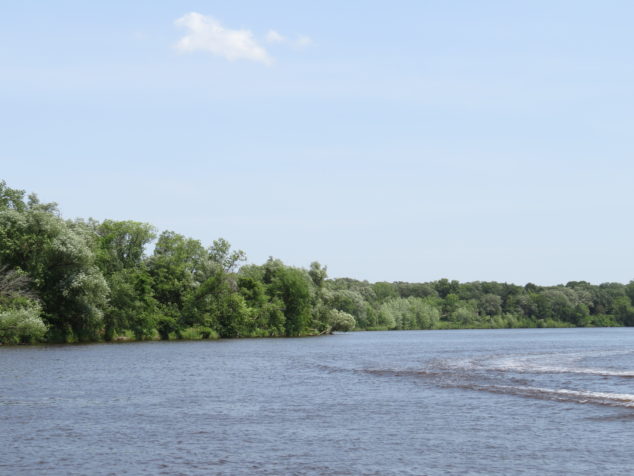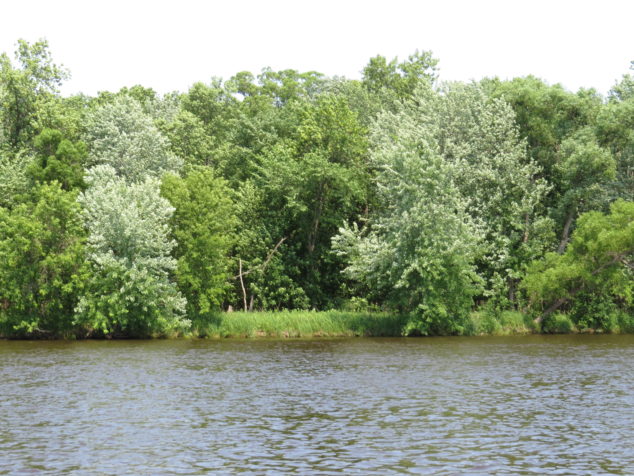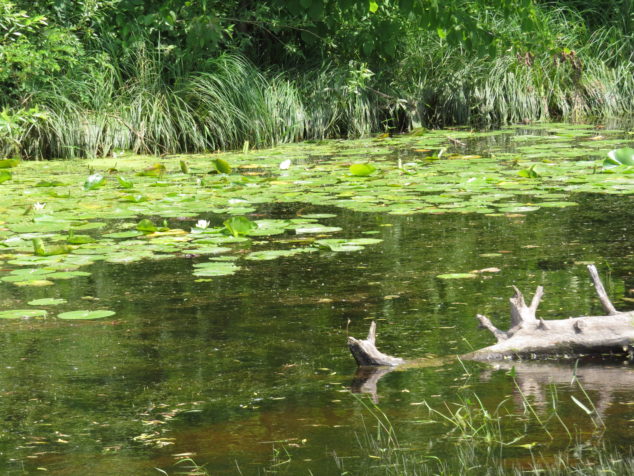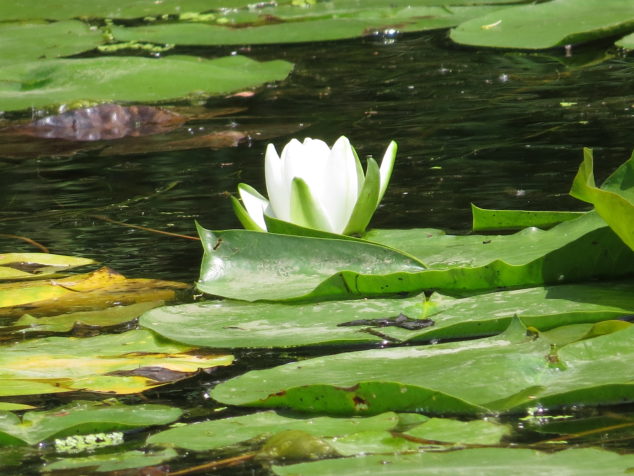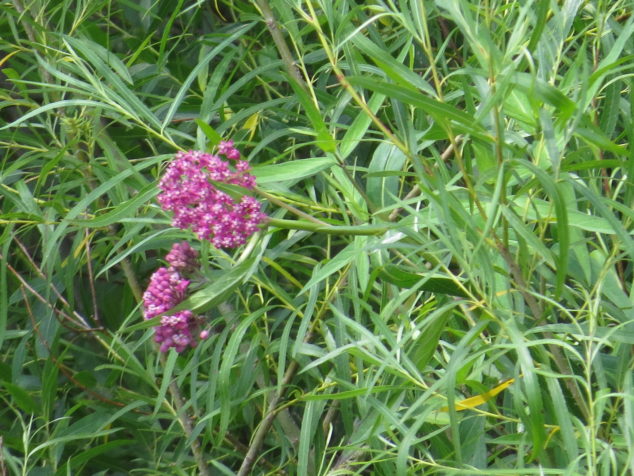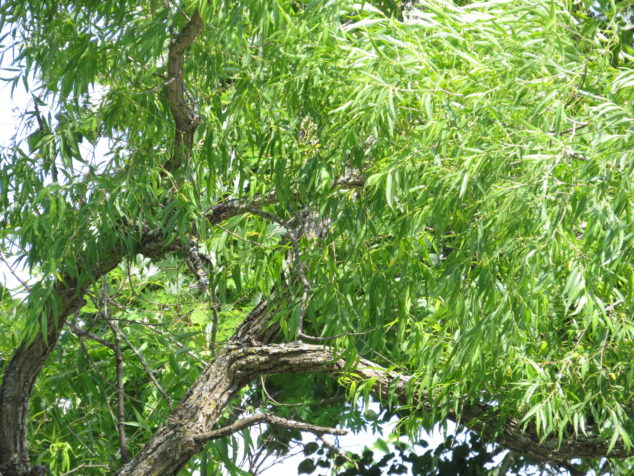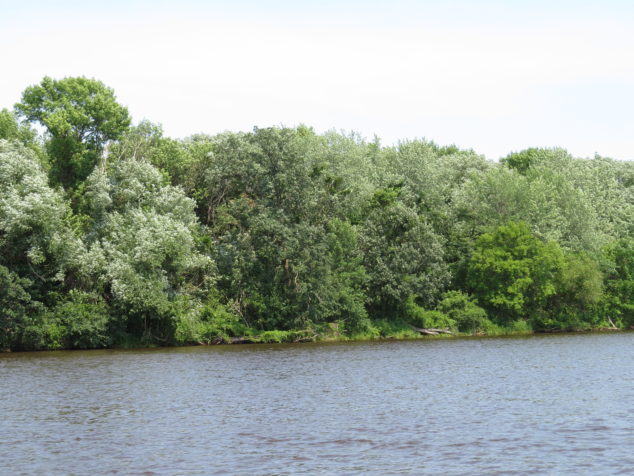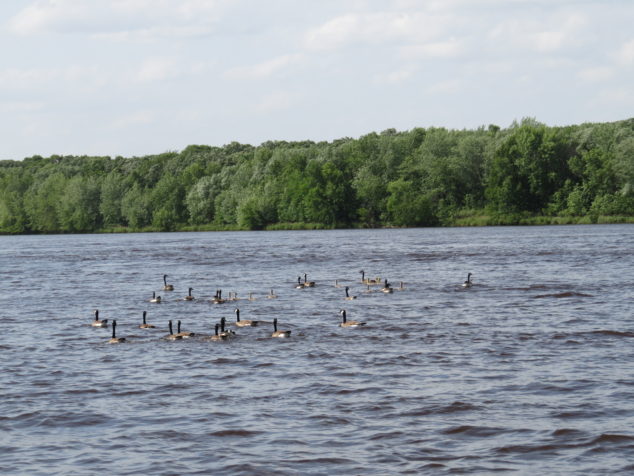You can’t be unhappy in the middle of a big, beautiful river. –Jim Harrison
That was me on Friday afternoon. The big, beautiful river was ‘The River’, “the great Mississippi, the majestic, the magnificent Mississippi” as Mark Twain describes his beloved natural wonder. The 2350-mile waterway begins at Lake Itasca, Minnesota where the River is 20-30 feet wide, ‘almost pristine,’ and empties into the Gulf of Mexico after flowing between or through ten states. The watershed area drained by the Mississippi and its tributaries, including the Ohio, Missouri, and Arkansas Rivers is a vast 40% of the continental US. 15-18 million people use it for their water supply. It supports a diverse population of fish, birds, amphibians, reptiles, mammals, and plants. The upper Mississippi particularly, supports a huge recreation economy, and the whole river from Minneapolis/St. Paul south is a water highway for agricultural products, iron and steel, paper and wood, and petroleum products. It does not take long, however, before the ‘almost pristine’ water that leaves Lake Itasca becomes polluted. In the three months it takes water leaving Itasca to reach the Gulf, many industrial, urban, and agricultural pollutants are added to it. Even while the water is still in Minnesota, there are stretches of the River that exceed water quality standards for mercury, bacteria, sediment, PCBs and nutrients making it unsuitable for fishing, swimming, or drinking. By the time it reaches Louisiana… well, you know.
Where I was boating with kind, generous friends, the River is still beautiful and much closer to pristine than toxic.
We made our way up the River to an island sand bar where the water was shallow. A little pond between the ridge of sand and the island was filled with White Water Lilies, adding beauty to the marshy water.
Swamp Milkweed found a happy home along the perimeter of the island, adding a bolt of color to the green Willow around it.
Children built sand/mud castles, music floated from different boats, and water games—some with rules, some impromptu—occupied the sand bar people in the hot afternoon sunshine. I sat on the boat under the shade of my hat, soaking in the goodness of friendship, the warmth of a summer day, and the movement of water. I was happy in a contented, peaceful way. “You can’t be unhappy in the middle of a big, beautiful river.”
Some other creatures felt the same way as we headed back to the dock.
How do we keep the Mississippi and all the other rivers beautiful? Pollution, like climate change, is a huge problem that affects everyone on this planet. In fact, it’s such a huge problem that we don’t like to think about it. So most of us and many leading the government agencies that are supposed to be working on these very problems bury our heads in the sand and pretend it’s not an issue. I understand the overwhelm. How do we reduce the pollutants and keep them from being added to the water? There are solutions. There are dedicated people working to solve the problems. We need more people on board. How also do we keep our communities and our lives beautiful? It depends on what we add to our lives. We need to keep the pollutants out—the hatred, apathy, blame, bigotry, disdain and corruption. Add in friendship, understanding, responsibility, generosity, humility, and love for one another. Let’s keep America beautiful in every way, so our lives are more like the pristine waters of Lake Itasca and less like the toxic waters flowing into the Gulf.
